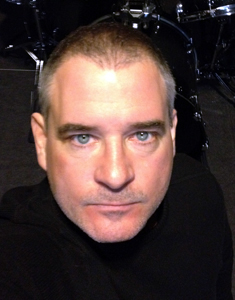LD Profile: Paul Carter
Posted on September 1, 2012 Six questions with Paul Carter, lighting designer and owner of LED MAN design, install and support company in Toronto, Canada.
Six questions with Paul Carter, lighting designer and owner of LED MAN design, install and support company in Toronto, Canada.
1. How did you get into this field?
I started as a LD in the early ‘80s and have worked with major recording artist and club acts, which are a passion of mine. I really like to see new bands react to a bigger lighting and FX show than they are used to. I started specializing in LED lighting for bands several years ago and have evolved that into making my own mobile LED Liteboxes that bands can take to any show and fit in most car trucks. The boxes feature a quick setup and add impact to their light shows. I supply LED lights, design, installation and support for bands, clubs, DJs and events. A high school friend and neighbor Doug Adams, owner and lead designer of PyroTekFX, gave me a chance to do lights for his first band in the early ‘80s. I learned lighting by touring with his band and many others to follow. Almost immediately, I saw the importance of lighting in a show and how it affects the mood and impact of a band’s performance. I became more and more passionate about lighting and I consistently try to outdo myself with design ideas, no matter how small or large the show is.
 2. What do you think is the next big thing in the lighting industry?
2. What do you think is the next big thing in the lighting industry?
LEDs are the “it” factor when it comes to lighting. LEDs are by far the greatest advancement in lighting since moving head lights. I think in the very near future LEDs will be the primary light source everywhere, not just in the entertainment industry. Anyone using LEDs in their daily shows will tell you their huge advantages. My clients are amazed at the flexibility, beauty and advantages, when using or switching to LEDs. That being said, I think LED technology is still evolving and there are still huge unforeseen advancements that will take LEDs even further and make them even more unique then they already are. There are no limits to this technology.
 3. Do you have a favorite fixture (and why)?
3. Do you have a favorite fixture (and why)?
Currently, the CHAUVET SlimPAR 64 is my primary LED lamp for many reasons. It has a slim, lightweight, design and a powerful LED output. I would say about 25% brighter than any LED PAR in its class. But, probably my favorite feature is the ability to chain the power, one lamp to the next from the back of the lamp. This is a huge time and cable saver when building a show or using them when I build custom LED box designs and bars. Everything you want you can find in a SlimPAR 64 and there is no surprise that this is my most requested fixture.
 4. What has been your favorite design/project?
4. What has been your favorite design/project?
Since my company has gone full LED, my favorite project so far is the Rehearsal Factory in Mississauga Ontario. The owners had a clear idea of what they wanted for their showroom—a big show. The room showcases new and seasoned bands from Canada and around the world, so it was important for them to make it the best that it could be. At the same time they were also concerned about power availability in the room and expensive hydro costs. I provided them with the answer: LEDs. I designed the room with 24 SlimPAR 64 wash lights, two blinder LEDs and a CHAUVET Hurricane Haze. The entire show fits on a single 30-amp breaker. Gone are the days of dimmer racks and three-phase installs. A simple wall switch and the LEDs are on. This is a great room to showcase the power, flexibility and beauty of LEDs. Their clients love it and it has become a great revenue stream for their already booming rehearsal business.
 5. What was the biggest unforeseen obstacle that you’ve faced in one of your designs, and how did you overcome it?
5. What was the biggest unforeseen obstacle that you’ve faced in one of your designs, and how did you overcome it?
Working with an Alice Cooper tribute band back in the mid ‘80s. This was no small production and was even endorsed by Alice Cooper himself. The band at the time was used to the standard, back, mid and front truss with the odd floor light. Things matched and made sense. But that isn’t the vision I had when I was hired. My design was anything but symmetric. It was chaotic and nothing matched. Lights looked as though they were just dropped somewhere on the stage and turned on. Trusses were standing or leaning up against things. It was a beautiful mess, but there was a lot of thought put into this design. I used even split gel colors (two colors scotch taped together) to add more oddness and irregularity to the show. The band and management didn’t understand, but I was sure I was creating the right atmosphere and eventually my design fit the show perfectly. About several months of band uncertainty, Alice Cooper was playing in the city and our band was invited out to the show. To their surprise, the lighting design was a “chaotic-nightmare,” asymmetric chaos in all its glory. Now, whether my design concept was borrowed or great minds think alike, I was vindicated. The moral to the story is, be true to your design.
6. Complete this thought: A show without light is like…
… is just radio. Lighting sets a mood, creates excitement and impacts people, which makes it an integral part of any show. For me, it’s a passion.